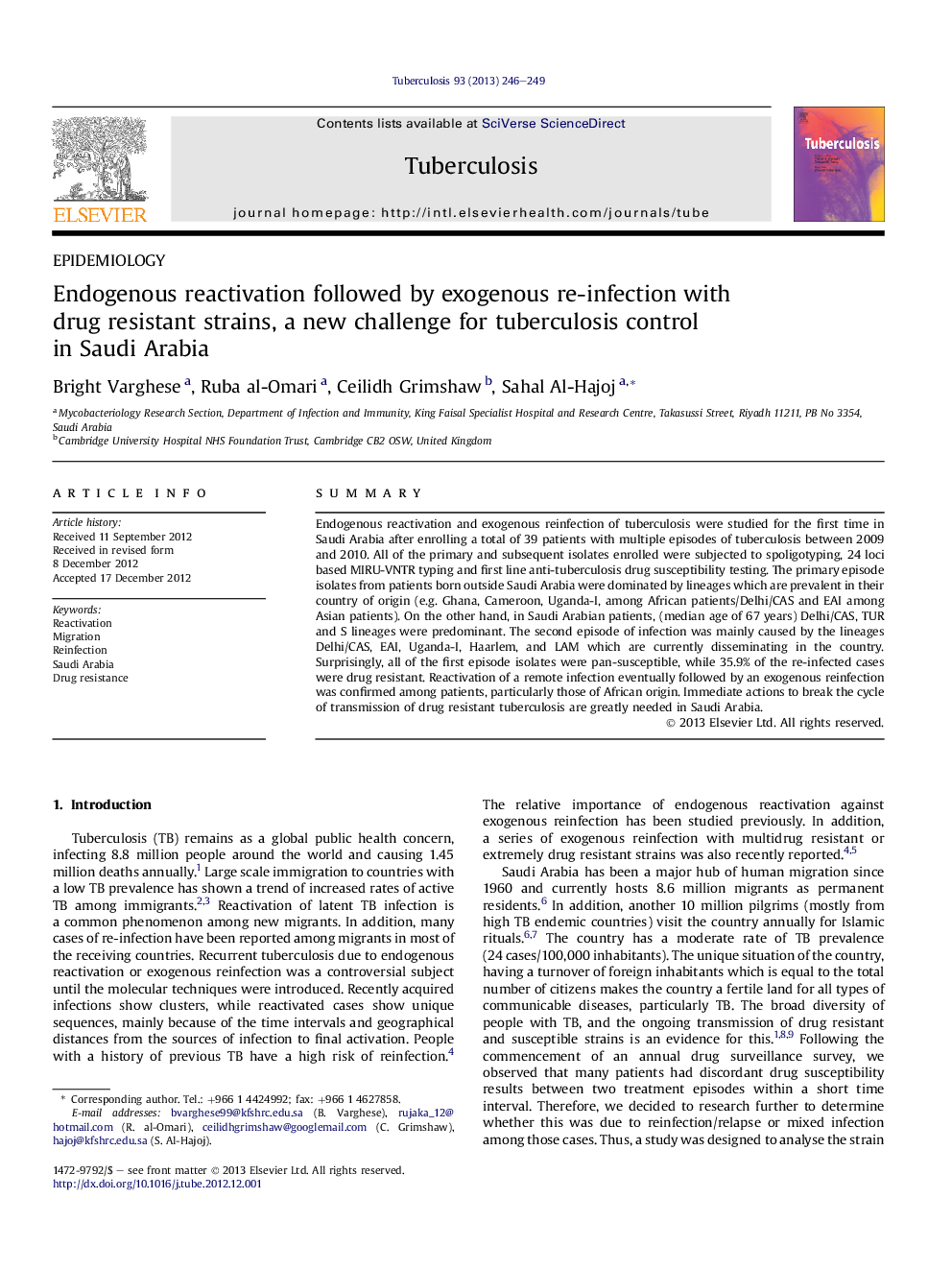| Article ID | Journal | Published Year | Pages | File Type |
|---|---|---|---|---|
| 10962099 | Tuberculosis | 2013 | 4 Pages |
Abstract
Endogenous reactivation and exogenous reinfection of tuberculosis were studied for the first time in Saudi Arabia after enrolling a total of 39 patients with multiple episodes of tuberculosis between 2009 and 2010. All of the primary and subsequent isolates enrolled were subjected to spoligotyping, 24 loci based MIRU-VNTR typing and first line anti-tuberculosis drug susceptibility testing. The primary episode isolates from patients born outside Saudi Arabia were dominated by lineages which are prevalent in their country of origin (e.g. Ghana, Cameroon, Uganda-I, among African patients/Delhi/CAS and EAI among Asian patients). On the other hand, in Saudi Arabian patients, (median age of 67 years) Delhi/CAS, TUR and SÂ lineages were predominant. The second episode of infection was mainly caused by the lineages Delhi/CAS, EAI, Uganda-I, Haarlem, and LAM which are currently disseminating in the country. Surprisingly, all of the first episode isolates were pan-susceptible, while 35.9% of the re-infected cases were drug resistant. Reactivation of a remote infection eventually followed by an exogenous reinfection was confirmed among patients, particularly those of African origin. Immediate actions to break the cycle of transmission of drug resistant tuberculosis are greatly needed in Saudi Arabia.
Related Topics
Life Sciences
Immunology and Microbiology
Applied Microbiology and Biotechnology
Authors
Bright Varghese, Ruba al-Omari, Ceilidh Grimshaw, Sahal Al-Hajoj,
